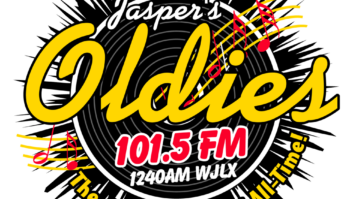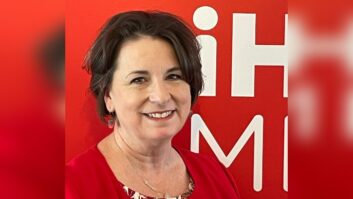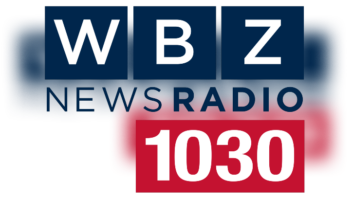Located in the Santa Clarita valley, 35 miles northwest of the city of Los Angeles, is the affluent bedroom community of Santa Clarita. It’s the third largest city in Los Angeles County, with a population in excess of 200,000. The valley takes the shape of a large �V,� the sides of which are formed by mountain ranges running westerly and northerly.
It’s this local topography that prevents iHeartMedia Los Angeles’ Mount Wilson signals (KIIS-FM, KOST, KRRL and KBIG) from having any meaningful coverage there. We have addressed this lack of coverage in Santa Clarita with a mountaintop on-channel booster that employs the latest in 2015 broadcasting technology.
BOOSTER DESIGN CONSIDERATIONS
When you consider deployment of an on-channel booster, a set of realistic expectations and goals needs to be carefully considered by the station staff prior to any serious technical planning. For example:

Why do we need the booster? Presumably, the booster will serve listeners who are not already served by your existing “main” signal (due to terrain shielding, etc.)
What sort of mutual interference will result from the booster once on-air?
With respect to mutual interference, what technical solutions are in the toolbox for use in its mitigation (at least to an acceptable level)?
And of course, what sort of budget is there for the project? A booster, like any other project, may run the gamut from a “base system” using an FM receiver feeding an exciter, to what amounts essentially to a small transmitter site with program delivery systems, audio processing and remote control.
Most importantly, is there a suitable site available that will provide the desired coverage while also meeting the criterion put forth in FCC 74.1235(c):
The effective radiated power of FM booster stations shall be limited such that the predicted service contour of the booster station, computed in accordance with 73.313 paragraphs (a) through (d) of this chapter, may not extend beyond the corresponding service contour of the primary FM station that the booster rebroadcasts. In no event shall the ERP of the booster station exceed 20 percent of the maximum allowable ERP for the primary station’s class.
Check with your FCC counsel with respect to the language relating to “corresponding service contour of the primary FM station.” If your facility is a grandfathered “Super B” station, you may find you’re restricted to the “reference contour” for your station class and not your actual service contour.
FINDING A SUITABLE SITE
The first site we considered is operated by one of the well-known tower vendors in the U.S.
Computer modeling indicated this particular site would work well for us from a technical/coverage perspective. It had space for our building, and there was space on the existing tower to accommodate our antenna design.

This seemed perfect for the our needs; but upon further investigation, no electrical service was available for our use at the site, and after some expensive research, it became clear to us a permit grant for the electrical service and for the building was far from certain. The electrical work alone (exclusive of the permit process) was to be in excess of $100,000. Finally, we found that the space on the tower we planned to use was contracted to another tenant by a previous (and since forgotten) agreement (even though that other tenant had not builtout their site).
We therefore began a search for another site — one that would work well technically and be more of a “sign and drive” arrangement. (By this I mean having a building/antenna support structure and adequate electrical service already available.)
You should remember this story as you look at any potential new transmitter site. Ask a great many questions — even ask if the lessor has the right to lease the property to you. It’s not as automatic as you might expect!
Among other site considerations are those of NIER (radiation hazard to personnel), as well as potential interference to other existing radio services at the site. This is particularly true if one of the cell carriers already have a facility nearby. (Jeremy Ruck’s column on this topic.)
Due to the remoteness of the site, we made a concerted effort to provide the booster system with granular remote control and automation.
CONSTRUCTION
Again, computer modeling played a large role in our decision to go forward with the second site. A system for all four stations, using a combiner and single antenna, was designed, and we filed for the construction permits for the four booster stations.
Once the CPs were obtained, we ordered the following equipment:
- GatesAir FAX-150 transmitters
- GatesAir IP Link 200 AoIP codecs
- Burk Arc Plus Touch remote control
- APC 1500 UPS Units
- Inovonics AARON 650 receivers (for off-air reception of primary transmitters)
- Inovonics INOmini 635 receivers (for post booster combiner monitoring)
- Shiveley four-input Star combiner
- Kathrein-Scala dual CL-FM broadband FM antenna
- Worldcast FMB-80 RDS generators
- Omnia 11 or Audio Processors
- Orban 8600 Audio Processor
- Dual Ubiquiti ISM-band radio links
- Synaccess NetBooter
Although the new site on Oat Mountain appears to be in the midst of a densely populated area, it takes about one and a half hours to reach, and as such, every effort was made to ensure reliability, thorough remote control and automatic failover.
As one example: We’ve all experienced issues with UPSs, such as outright failures or batteries going south at the wrong time. To address this particular issue, we constructed a (large) relay-based AC switch panel which will switch to the alternate UPS unit should the main fail for any reason. It even has remote control and status.

For program delivery, we chose the GatesAir IP Link 200 AoIP codecs, with the synchrocast option, operating over redundant ISM-band IP radio links configured for automatic failover (at the layer three level). In addition, Inovonics Aaron 650 off-air receivers were installed as a backup audio transport using the composite output (as a baseband source to the transmitters). One design consideration is to use a good-quality, highly directional antenna to feed the off-air receivers. This requires a favorable circumstance — some degree of distance and shielding between the receive antenna and the booster transmit antenna, in order to avoid “self-interference.” Cross-polarization of the antennas is also used to enhance isolation.
The GatesAir FAX-150 transmitters were configured for automatic source failover so that should the primary IP link fail, switchover to the 650 receivers will occur without operator intervention, after a time delay. One side benefit of the 650 receivers monitoring of the primary signals is that you can stream (via the receiver’s Web interface) your station’s audio as a means of monitoring in-the-field signal quality.
We use four Inovonics INOmini 635 receivers, for post-combiner confidence monitoring, by way of a directional coupler on the output of the Star Combiner (along with some 50 dB padding). In this fashion we can remotely monitor the output of the booster signals on each frequency. The receivers are configured to send email alerts for audio/RDS and signal loss, though our local remote control monitors those same parameters as well, via SNMP.
Aside from using SNMP wherever possible, we also use old-school GPIO wiring for remote control/metering/status. Further, we installed Synaccess Networks reboot units on the audio processors, the router/switch, the Ubiquiti radios and the IP Link 200 units so that we can restore a locked-up piece of equipment to service as quickly as possible, without need for an unscheduled trip just to power-cycle a cranky box.
MORE WORDS ON RESEARCH
Do your research using the services of a qualified broadcast consultant before attempting a booster project. Do your homework on zones of mutual interference (are they in areas that matter little, such as farmland, mountains, etc.?) and be sure adequate signal contours cover desired population areas. Also, research ready-to-go available sites for your booster.
Don’t assume that tower and site are both fully prepared for your use. Avoid doing your own site development wherever possible — this can prove to be very time-consuming and very costly.
CONCLUSIONS
We have had good results thus far and are exploring further optimization and tuning techniques to get even better results from the boosters. The project took several years to complete, considering the time wasted on the original location. However, this project ultimately provided a lot of satisfaction to all involved in its design and construction.










